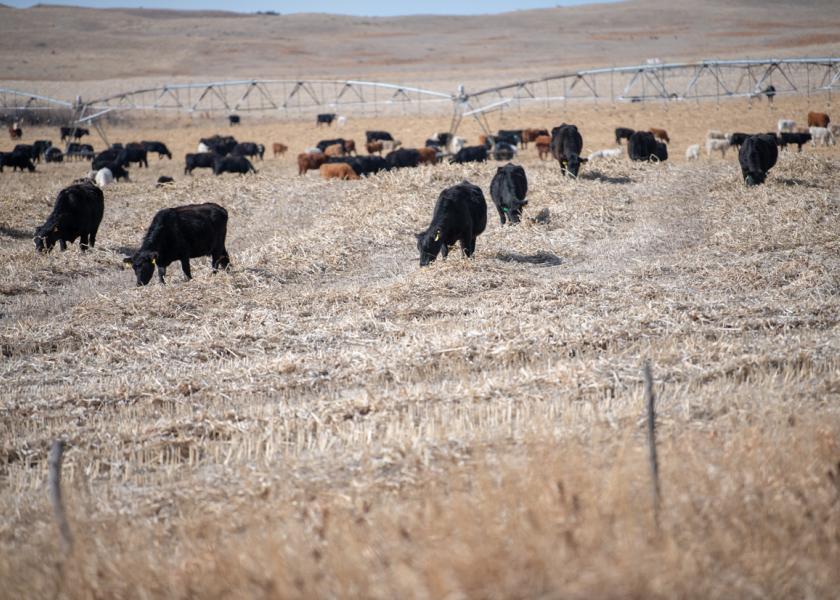Windrow Grazing Annual Forages to Extend the Grazing Season

In many areas of central and eastern Nebraska, drought conditions have resulted in reduced forage production on rangeland and pasture. This is resulting in a shortage of feed for many producers and a need for forage between now and when cornstalks are available for grazing. Windrow grazing annual forages allows producers to cut the crop at an optimum time for quality and increase harvest efficiency through strip grazing the windrows.
Advantages to Windrow Grazing
Harvested feed costs can be one of the largest expenses to cattle producers. Windrow grazing, sometimes called swath grazing, is a management practice that can significantly reduce harvesting and feeding costs. Swathing the crop and leaving the windrows in the field provides several advantages.
• Eliminates the costs of baling and hauling bales off the field.
• Reduces labor and equipment costs associated with feeding.
• Returns some nutrients and organic matter from consumed forage back to the soil where the crop was grown.
Precipitation Patterns Support Windrow Grazing in Central and Western Nebraska
In Nebraska, 75-80 percent of seasonal precipitation falls in the six-month period from April through September. Only 20-25 percent of precipitation falls from October through March. This seasonality of precipitation allows for swathing forage crops in early fall and preserving them through the fall and winter with minimal deterioration in quality due to weathering. Cool, dry conditions frequently associated with late fall and winter in Nebraska are favorable for preserving forage in a windrow.
Across Nebraska, the average amount of precipitation increases from west to east. Greater average precipitation in eastern Nebraska does increase the risk of windrow deterioration compared to drier conditions in central and western Nebraska.
Windrow grazing of warm season annual forages such as foxtail millet, sudan grass and sorghum x sudan grass hybrids can provide an excellent way to harvest these forages when they are at an optimum for quality and efficiently utilize them with minimal waste. Windrow grazing of cool season annual forages such as spring triticale, oats and spring barley planted in late summer can provide high quality feed for late fall and winter grazing as well.
Snowfall from October through March can be quite variable; however, extended periods when snow cover would prevent windrow grazing are limited. If cattle know that the windrows are present, they will dig through the snow to get to the windrows.
Nitrate Risks with Windrow Grazing
When windrow grazing annual forages, nitrate poisoning is a potential risk. If possible, clip forages prior to swathing and have a nitrate test conducted to see what level of nitrates are present. If nitrates are high, raising the cutter bar higher can help to reduce the nitrate levels in forage placed in the windrow, as nitrates tend to be concentrated in the bottom third of the stem. Annual forages placed in the windrow should also be tested for nitrates prior to grazing. If nitrate levels are too high for grazing safely, the crop can be baled and then ground and mixed with other feeds to dilute the nitrates to a level that is safe for feeding.
A webinar titled Windrow Grazing in Nebraska is available that highlights more of the details of using this management practice at http://beef.unl.edu.
A UNL NebGuide Windrow Grazing (PDF version, 623KB) is available as a resource as well.







